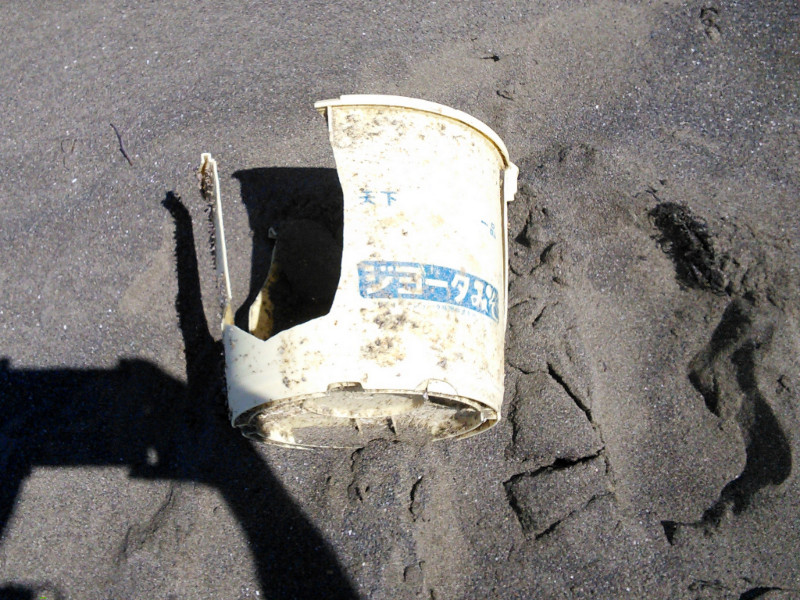Hi COASSTers,
It’s been an exciting few weeks. In the office, we’ve been busy taking a look at the Common Murre die-off and gearing up for the official launch of our new marine debris program. Our first trainings are scheduled for Forks (WA), Port Angeles (WA), and Newport (OR) next month. Additionally, COASST Executive Director, Julia Parrish, recently returned from a trip to the White House, where COASST was recognized on multiple fronts as an example of a citizen science program providing useful data to scientists and resource managers. Big thanks to all of you for all of your hard work!
Let’s take a look at what’s washed in recently:

Here’s a fun one! Barbara and Mike had “never seen anything like this bird” when they came across it during their September survey on South Butterclam in Washington.
Bill 30mm
Wing 28.5cm
Tarsus 34mm
Alaska Foot Key – page 34
West Coast Foot Key – page 22
Choose webbed (go to Q2), completely webbed (go to Q3), four toes: 3 webbed 4th free (go to Q5), tarsus not >12mm across (go to Q6), thin toe or nail only (go to Q7), heel swollen – STOP: Larids.
Alaska Guide
On LA1 –Bill is hooked, Gulls and Kittiwakes (go to LA2). Wing Coloration: triangular dark-white-dark pattern. Go to species pages: Red-legged Kittiwake (immature) LA16 or Sabine’s Gull, LA20 The wing is within the SAGU range (26-29cm) but not outside of reason for RLKI (29-33cm). If we look at “Similar Species” we see that SAGU inner primaries are white, as opposed to gray with white tips. Sabine’s Gull it is! Notice its dark bill with yellow tip (adult!) and dark head (breeding!).
West Coast Guide
On LA1 –Bill is hooked, Gulls and Kittiwakes (go to LA2). Wing Coloration: dark wingtips, primaries without windows. Go to species pages:
Black-legged Kittiwake LA13, wing tips not solid black. Moving on…
Heerman’s Gull LA21, all measurements too small. Hmm…
Red-legged Kittiwake (too rare to be in the guide). Can’t rule it out, so let’s stick with Group: Gulls and Kittiwakes, species unknown and let Charlie work his magic.
Sabine’s Gulls are so rare in the lower 48 that they aren’t even mentioned in the West Coast Guide!
During her June survey on Agate Beach in Northern Oregon, Wendy found quite a bit of bird variety, including this tricky specimen.
Wing 15cm
Tarsus 28mm
Alaska Foot Key – page 34
West Coast Foot Key – page 22
Choose webbed (go to Q2), completely webbed (go to Q3), four toes: 3 webbed 4th free (go to Q5), tarsus not >12mm across (go to Q6), thin toe or nail only (go to Q7), heel flat (go to Q8), foot not huge – STOP: Tubenose: Petrels
Alaska Guide
On TN1 –wing chord is <18cm: Storm-Petrels. Go to species pages:
Fork-tailed Storm-Petrel TN15
Leach’s Storm-Petrel TN17
Tarsus measurement more fitting for FTSP and plumage gray rather than dark sooty brown. No white rump patch. Fork-tailed Storm-Petrel it is!
West Coast Guide
On TN1 –wing chord is <17cm: Storm-Petrels. Go to species pages:
Leach’s Storm-Petrel TN9
Fork-tailed Storm-Petrel TN11
Tarsus measurement more fitting for FTSP and plumage gray rather than dark sooty brown. No white rump patch. Fork-tailed Storm-Petrel it is!
The Harps found the 7th COASST bird of its kind on their July survey on Ediz Hook in Washington.
Bill 30mm
Wing 28.5cm
Tarsus 34mm
Alaska Foot Key – page 34
West Coast Foot Key – page 22
Choose free (go to Q9), 4:3 front, 1 back (go to Q10), two toes are fused! STOP: Kingfishers are as far as the COASST guides will take you—this one is a Belted Kingfisher.

Keith found this “bucket” on Steamboat Creek in July. Amanda and Chris identify and translate the object as follows: In the small, blue kanji characters on top) 天下一品=Tenka Ippin=”Best thing on Earth” (In the larger white characters in the blue box below) ジヨータみそ=jiyota miso. The contents are probably bean paste that is put into miso soup, among other things. Tenka Ippin is apparently a restaurant chain in Japan that specializes in ramen.
What a find! Olli sent us this great shark photo from Cape Meares, Oregon that Katherine Maslenikov, Collections Manager at the UW Burke Museum, confirmed to be a salmon shark. Salmon sharks have a slightly bulbous body with a conical snout and are usually found roaming the subarctic and temperate North Pacific. As you might guess from their name, they feed primarily on Pacific salmon, but they will occasionally snack on other bony fish as well. Typically, they are about 6.5-8 feet long, but they can reach up to 10 feet in length!
Seen something on the beach you’ve always wondered about? Send us a photo!
Cheers,
Erika, Julia, Hillary, Charlie, Heidi, Jenn, and the COASST Interns

